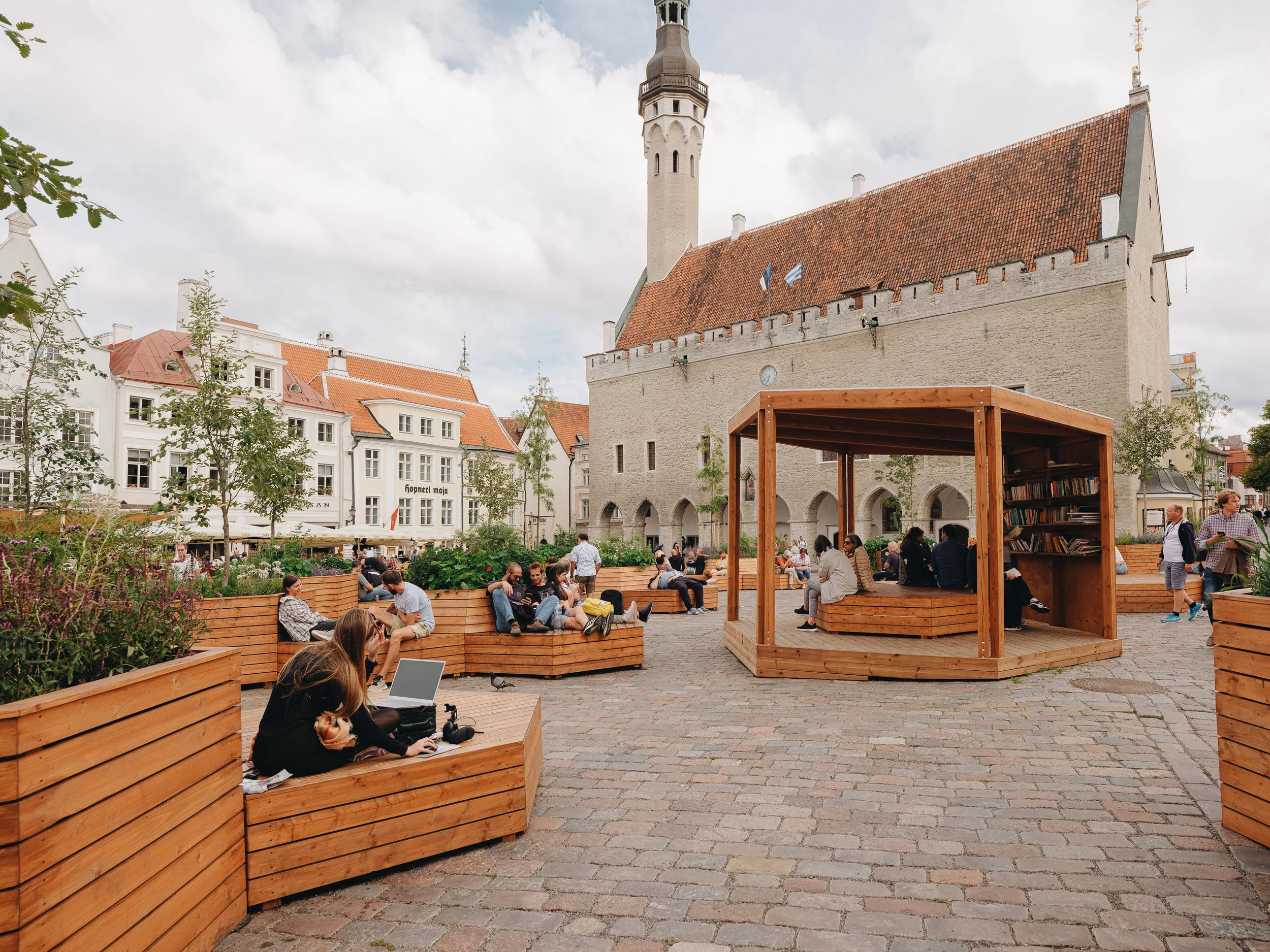Date: June-Oct, 2023
Location: Tallinn, Estonia
Authors: park concept by Ann Kristiin Entson and Hannes Aava, renders by Ann Kristiin Entson, plant design by Hannes Aava
Photos: Tõnu Tunnel
In celebration of the Tallinn European Green Capital, me and my colleague Ann Kristiin Entson at the Tallinn’s Strategic Management Office’s Spatial Planning and Design Department team designed a multi-purpose re-usable pop-up park to reactivate the UNESCO-heritage medieval town center. The premise was to create a non-commercial public space setting a stage for various culture events taking place at the Old Town Square.
Visited by thousands of locals and tourists every day in summer, Tallinn’s Old Town Square is one of the city's iconic symbols as well as a popular tourist center, while at the same time symptomatically lacking of seating and activities.
The success of the project was confirmed by an qualitative study of the project conducted by the Stockholm Environmental Institute that interviewed the users and monitored the use
The project lasted from June until October and will return next year.
The project has been nominated for the Estonian Architecture Awards of 2023 by the Association of Estonian Landscape Architects and was explicitly mentioned in the nomination of Tallinn as one among four Estonian cities excelling in heritage preservation and celebration by Estonia’s National Heritage Board this year.
Concept
Addressing the shortage of seating and greenery, the park’s concept seeked to activate the space by adding 31 hexagonal planting containers integrated with seating, an outdoor stage, a reading pavilion with a book shelf curated by the National Library, and a pavillion with egg-shaped swinging chairs. This design allowed for the park to be adapted forvarious events and activities taking place in the square, including concerts, themed fairs, and festivals.
The modular hexaon-driven design is a homage to the beehive structure as pollinators are the symbol of the Tallinn European Green Capital.
Planting design
The plant selection is based on the needs of city’s communal department as all of the plants will be re-planted. The selection aimed to create a lush spectacle with special focus on aromatic and edible perennials to create a multi-sensory experince. The plants had small introduction signs that encouraged people to smell, touch or taste them. Most of the species rate highly among the requirements of the pollinators, while some references like Tropealum majus and Lavandula are site-specific, as they were very popular in the medieval cloisters of Old Town.








